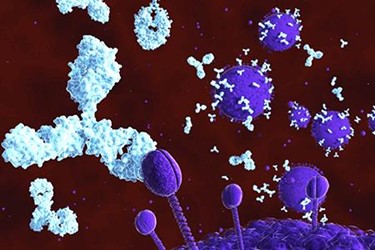Biacore™ Systems For Immunogenicity Testing

Immunogenicity is the propensity of biotherapeutics to induce unwanted immune responses when administered to the patient. Immunogenicity is an important aspect to consider when developing new protein therapeutics as it can affect both safety and efficacy. Testing for immunogenicity is performed during the preclinical and clinical phases.
The US FDA “Guidance for Industry: Assay Development for Immunogenicity Testing of Therapeutic Proteins” (1) states that an immunogenicity assay should, in addition to being sensitive, also be able to detect all isotypes, in particular IgM and all IgG isotypes. The recommended sensitivity is 250 to 500 ng/ml. Studies are performed in three steps: Screening, confirmation, and characterization of positives.
Initial screening can result in false positives, and therefore, the initial screening assay is usually followed by a confirmatory assay. After identification and confirmation of positive samples, a full characterization of anti-drug antibodies (ADAs) in terms of assessment of isotype (class or subclass), binding stability, epitope specificity, and neutralizing capacity give valuable information of the nature of the studied immune response.
Aarden et al. (2) have observed that IgG4 is second to IgG1 as the major isotype in ADAs developed for therapeutic monoclonal antibodies (MAbs). IgG4 have been associated with immune responses generated under conditions of high doses and prolonged exposure to therapeutic proteins. IgG4 ADAs can be difficult to detect in traditional bridging or homogenous enzyme-linked immunosorbent assay (ELISA) and enhanced chemiluminescent (ECL™) assays due to their bispecific nature.
Cytiva offers systems designed specifically for GLP/GMP-regulated working processes that are usually required for immunogenicity studies. This paper shows examples of how label-free biophysical binding assays are successfully employed in all steps in the immunogenicity workflow to ensure confident detection, confirmation, and comprehensive characterization of immune responses (Fig 1). The benefit of using Biacore system and surface plasmon resonance (SPR) technology compared to traditional technologies is presented.
Get unlimited access to:
Enter your credentials below to log in. Not yet a member of Drug Discovery Online? Subscribe today.
